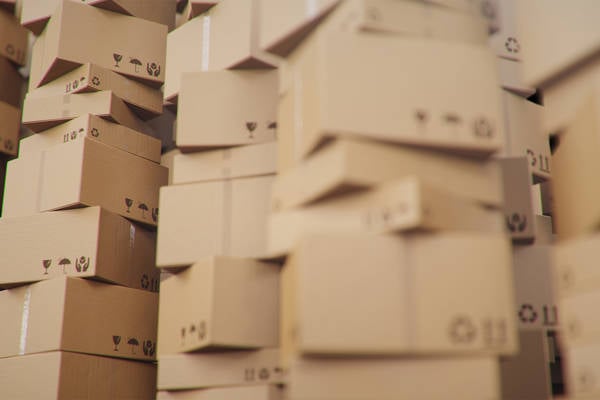PPWR: The Packaging and Packaging Waste Regulation Explained
As a leading provider of sustainable packaging solutions, we fully support the European Union’s aim of promoting packaging circularity and reducing the impact of packaging on the environment. To help our customers navigate new rules shaping the future of packaging in the EU, we have outlined the latest information on the Packaging and Packaging Waste Regulation (PPWR), its importance, objectives, and the differences between existing rules and the key measures introduced by the new legislation.
Please note this information does not constitute legal advice. This is a general summary of the PPWR based on information accessed by DS Smith. Customers should refer to publicly available information shared by relevant EU and national authorities and take advice on their own position as necessary.
This page was last updated on 21 August 2025. The information on this page is taken from the Regulation (EU) 2025/40 of 19 December 2024 on packaging and packaging waste (PPWR).
What is the PPWR?
The PPWR is a piece of legislation revising the Packaging and Packaging Waste Directive (PPWD), which was adopted in the 1990s and revised several times since.
The European Commission proposed to overhaul the PPWD in 2022, after it found that it was not efficiently preventing the growth of packaging waste and the reduction of the environmental impact of packaging.
Is the PPWR already in force?
The PPWR entered into force on 11 February 2025 but its measures will only start applying from 12 August 2026. Businesses will have to comply with different measures by different dates.
Will the PPWR affect your business?
Yes, absolutely. The PPWR will considerably change how we design, consume, and dispose of packaging in the EU across all value chains. It will bring nothing short of a revolution in the EU packaging landscape.
Most packaging categories are affected in one way or another by the measures contained in the PPWR, so all businesses should prepare for what is coming.
What are the key objectives of the new Regulation?
The Regulation aims to reduce the environmental impact of packaging whilst harmonising packaging rules throughout the EU to facilitate the free movement of goods, by:
- Preventing the generation of packaging waste. The PPWR intends to reduce the amount of packaging waste generated in the EU, introduce restrictions on what packaging can be used, and promote reusable and refillable packaging solutions.
- Boosting high-quality recycling. The PPWR aims to make all packaging on the EU market recyclable in an economically viable way by 2030.
- Adopting harmonised rules. EU-wide rules on labelling, void space, and mandatory recycled content will promote a level-playing field across the EU, with the same rules applying to all.
What does PPWR change compared to the existing rules?
A new, more ambitious approach to packaging waste
The PPWR aims to address the continued growth in packaging waste in the EU. This translates into obligations not only for EU countries, such as waste reduction targets, but also for businesses (mandatory reuse targets for certain packaging categories, bans on some types of single use packaging, packaging minimisation requirements, etc).
Wide-ranging rules across the EU market
The shift from a Directive to a Regulation is expected to bring greater harmonisation to packaging rules in the EU. Directives give greater leeway to European countries when implementing EU rules, allowing for national divergence. Conversely, regulations promote a "one-size-fits-all" approach and set rules to be implemented everywhere in the same way.
The Commission has decided to replace the Packaging Waste Directive with a Regulation to ensure greater harmonisation and enforceability of packaging rules across Europe, which is positive news for business operating across the EU.
What are the key measures in the PPWR?
- All packaging in the EU will need to be recyclable by 2030.
- All packaging will need to comply with Design for Recycling criteria, to be defined in secondary legislation.
- Extended Producer Responsibility fees to be paid by businesses will be based on recyclability performance grades.
- Reuse and refill targets for several types of packaging (food & drink, grouped, transport) from 2030.
- Cardboard packaging is excluded from all reuse targets.
From 1st January 2030, ban on plastic packaging including:
- In the shape of shrink wrap and collation film, to group products together.
- For fresh fruit & vegetables below 1.5kg (some exceptions to be determined).
- Used for food & beverages consumed in premises in the hospitality sector.
By 1st January 2030:
- Packaging minimisation becomes the norm.
- Max 50% empty space ratio for grouped, transport, and e-commerce packaging.
- Packaging misleading consumers into thinking the product is larger than it actually is will be banned (e.g. double walls, false bottoms).
What is DS Smith doing about the PPWR, and how can we help you?
As the leading sustainable packaging provider in Europe, DS Smith has been following the PPWR proposal from the outset. We are in a privileged position to help our customers and partners throughout the supply chain adapt to the new reality of packaging regulation in the EU.
We are taking steps to ensure our portfolio is best-in-class to deliver on the ambitions of the new regulation and are well positioned to help our customers make the most out of these regulatory changes.
Get in touch with us if you’d like to see how we can help you navigate these changes and future-proof your packaging for a post-PPWR world.
References:
